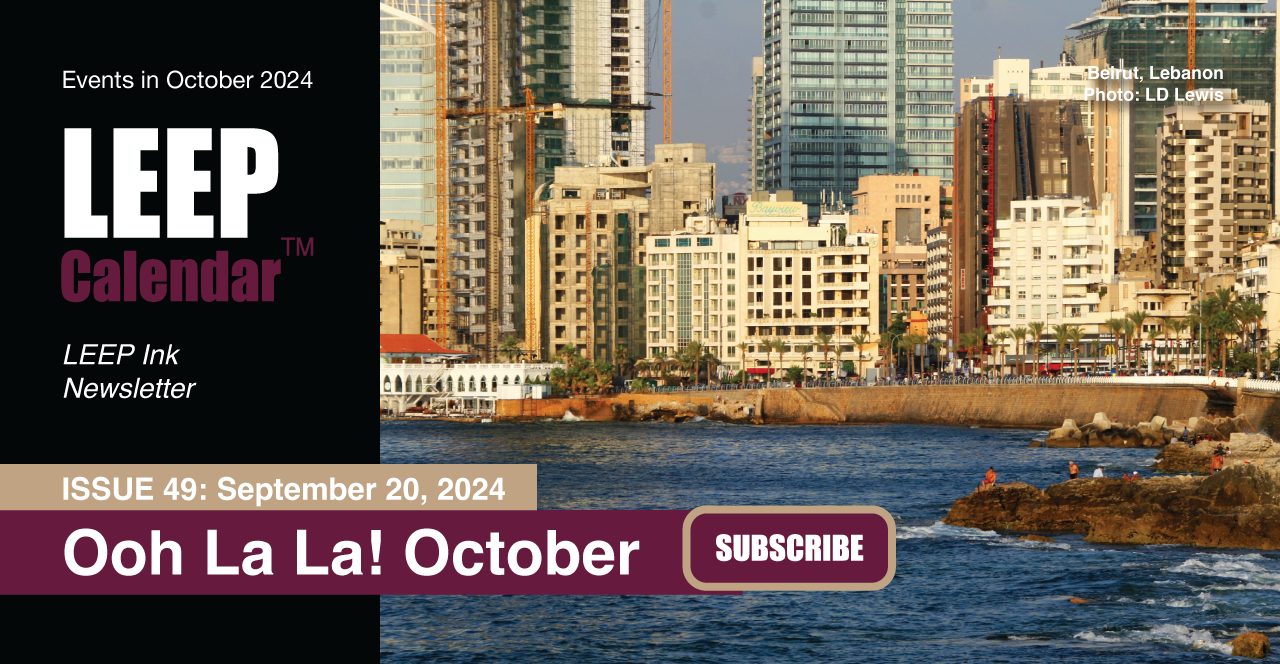 AD
AD
Today is: November 22
Scroll to explore events active on this date.
Additional Events on LEEP
LEEP INK FEATURES

August is Appropos
A toddler playing in the fountain at a park in Santa Fe, New Mexico—Photo LD Lewis. In August, we live through the Dog Days of Summer. It's hot and often humid, and those ...

September is Sassy
Can you hear that sigh of relief from parents worldwide? Yes! September marks the return of students to school, a global phenomenon. Preparations for the ACT and SATs begin earnestly for ...

OOH LA LA, October
October is the busiest month for events, with 5% more happening than in May, the second most eventful month. Sailing enthusiasts will be glued to the finals of this year's Am...
About National Indigenous Peoples Month
Lifestyle , South Asia
Ends: Oct 31, 2025
DESCRIPTION:
INDIGENOUS PEOPLES MONTH:
HONORING THE HERITAGE OF THE PHILIPPINES
The Philippines observes Indigenous Peoples Month each October. It is an event dedicated to recognizing and celebrating the country's indigenous communities' rich cultural heritage, traditions, and contributions. The National Commission on Indigenous People (CIP), in collaboration with various cultural organizations and government agencies, champions the event. Indigenous Peoples Month aims to promote awareness of the unique identities of the indigenous peoples, protect their rights, and foster a deeper appreciation of their vital role in the nation's history and cultural fabric.
TOP FIVE INDIGENOUS PEOPLES OF THE PHILIPPINES
The Philippine nation is home to a diverse array of indigenous groups, each with its distinct language, customs, and traditions. Among the main Indigenous groups are:
—The Igorot
Located in the mountainous region of the Cordillera in Northern Luzon, the Igorot are known for their rich traditions in agriculture, weaving, and woodcarving. The famous Banaue Rice Terraces, a UNESCO World Heritage site, are a testament to their ingenuity and sustainable farming practices.
—The Lumad
This collective term refers to various indigenous groups in Mindanao, including the Manobo, Mandaya, and T'boli. Lumads are recognized for their vibrant culture, traditional music, and T'bolie beadwork. They predominantly inhabit the forested and mountainous areas of Mindanao.
—The Mangyan
The Mangyan people reside on the island of Mindoro, particularly in its central and southern regions. Known for their peaceful way of life and ancient script called "surat Mangyan," they have preserved much of their culture despite external influences.
—The Aeta
The Aeta are considered among the earliest inhabitants of the Philippines. They are found in various parts of Luzon, particularly in Zambales, Bataan, and Pampanga. Traditionally, they are nomadic hunter-gatherers known for their deep knowledge of the natural environment.
—The Badjao
Often referred to as "sea gypsies," the Badjao are an Indigenous group that traditionally lives on boats and are spread across the coastal areas of the Sulu Archipelago, Mindanao, and parts of Borneo. They are known for their exceptional diving skills and reliance on the sea for their livelihood.
Indigenous Peoples Month features various activities, including cultural performances, exhibits, forums, and workshops that showcase the diverse traditions and crafts of these Indigenous communities. The month-long celebration also serves as a platform for addressing issues faced by Indigenous peoples, such as land rights, education, and access to basic services.
By highlighting the contributions and challenges of Indigenous communities, Indigenous Peoples Month aims to promote inclusivity, protect Indigenous cultures, and ensure that the voices of these communities are heard and respected in the broader national discourse. The observance is a testament to the Philippines' commitment to preserving its rich cultural diversity and honoring its people's heritage.
VIDEOS
SUPPORTING DOCUMENTS
Currently, this event does not have supporting documents.
ADDITIONAL IMAGES
Currently, this event does not have supporting images.
Where would you like to go now?
 AD
AD


/footer-logo.svg)
